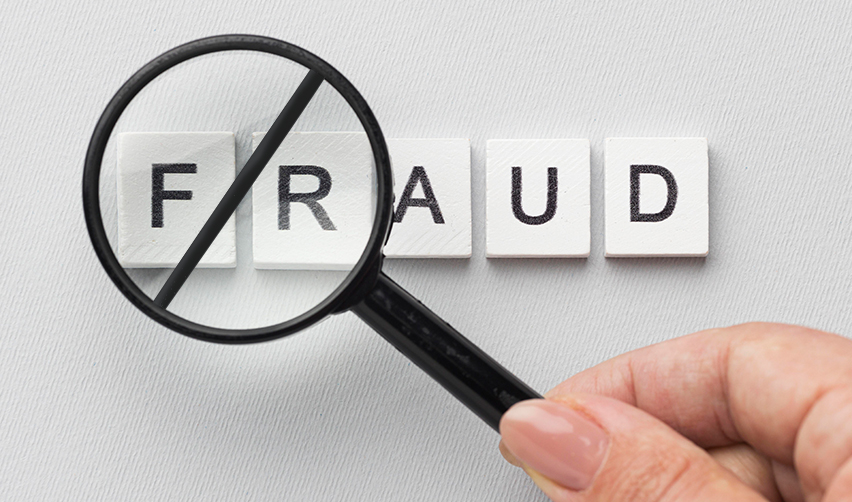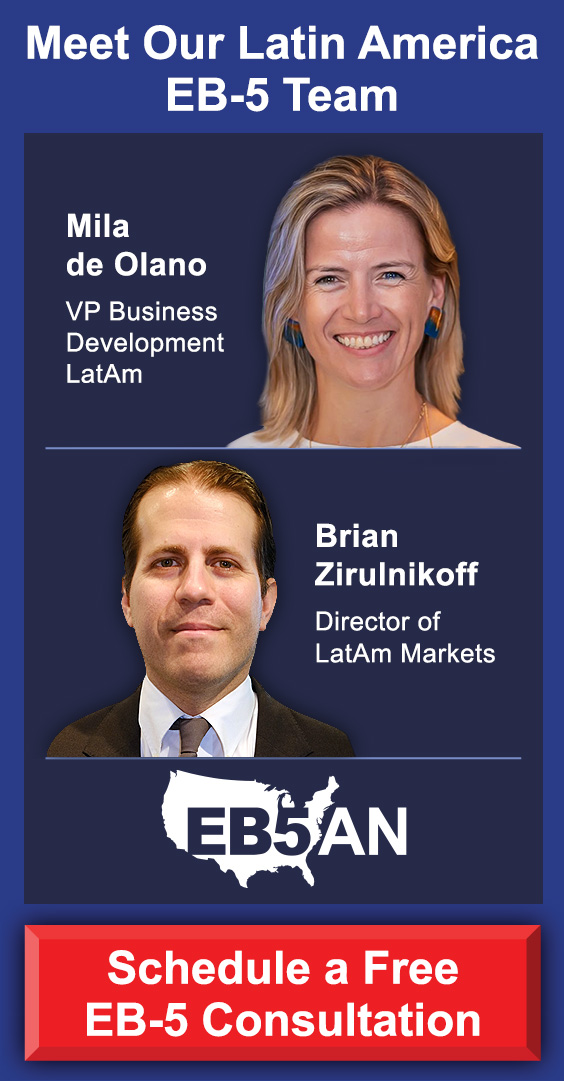The Government Accountability Office (GAO) published a report on the EB-5 Immigrant Investor Program. This report analyzes the program’s approach toward monitoring EB-5 fraud and national security concerns.
The GAO found room for improvement in the policies used to combat fraud and national security issues. However, its report also demonstrates that the instances of fraud detected in the EB-5 industry are few. The GAO found that, during the 2021 fiscal year, less than 1% of EB-5 applications were associated with fraud.
This analysis by an independent, nonpartisan agency clearly shows that the accusations of “rampant fraud” launched against the EB-5 Program are misleading. The vast majority of EB-5 applicants are not the victims of fraudulent investment scams, nor do they pose a national security risk.
This article summarizes the GAO’s findings. It also outlines how the new EB-5 Reform and Integrity Act of 2022 (RIA) empowers United States Citizenship and Immigration Services to detect and prevent fraud in the EB-5 industry.
Summary of GAO Report: “Immigrant Investor Program: Opportunities Exist to Improve Fraud and National Security Risk Monitoring”
GAO Recommendations to USCIS
How the EB-5 Reform and Integrity Act of 2022 Protects EB-5 Investors against Fraud
Invest in the EB-5 Visa with Confidence
Invest in Safe EB-5 Projects
EB-5 Risk FAQs
Summary of GAO Report: “Immigrant Investor Program: Opportunities Exist to Improve Fraud and National Security Risk Monitoring”
The GAO report on fraud in the EB-5 Program provides insight into the fluctuating trends of assistance requests, leads, and cases related to fraud from fiscal years 2016 through 2021.
Here are some of the report’s key findings:
💡Fraud detection is limited
The EB-5 Program’s Fraud Detection and National Security Directorate (FDNS) collects data to identify EB5 frauds and national security risks. But limitations in detection capabilities make it difficult for them to obtain readily available information to monitor trends and identify ever-evolving fraud risks.
The primary system FDNS uses to record data on EB-5 Program fraud and national security concerns is the Fraud Detection and National Security Directorate Data System (FDNS-DS). The FDNS-DS has a limited ability to collect information on unique fraud types and specific national security concerns.
💡Managers need real-time data collection and analysis
GAO’s Fraud Risk Framework suggests that managers should collect and analyze data to monitor fraud trends in real time. Systematically collecting and tracking data on the types and characteristics of EB-5 fraud would provide FDNS with more readily available information to monitor and assess risks.
This data would also better position the EB-5 Program to identify oversight deficiencies and respond to unique and evolving risks in the EB-5 Program. For example, USCIS might choose to increase training as needed.
💡Paper-based systems hamper petition denial monitoring
In addition to the limitations of FDNS-DS, FDNS faces challenges in monitoring and assessing fraud due to the absence of readily available data on petition and application denials—including when fraud is an underlying factor.
FDNS officials said that their endeavors are hampered by their reliance on manual reviews of voluminous paper petition files to obtain this information, which is a time-consuming process. Collecting and analyzing data on petition and application denial reasons related to fraud or national security concerns would provide FDNS with valuable insights to monitor trends and address potential risks in the EB-5 Program.
💡Fraud and national security concerns made up less than 1% of EB-5 petitions
In the fiscal year 2021, the number of EB-5-related investigations conducted—including leads, cases, and national security concerns—made up less than 3% of pending petitions (I-526Es and I-829s).
USCIS data shows that the number of EB-5 Program requests for assistance, leads, and cases related to fraud fluctuated from fiscal years 2016 through 2021. During this period, national security concerns generally increased.
Various factors contributed to the increase in leads, including:
- Providing additional adjudicator training.
- Performing new checks for connections with high-risk countries or entities.
- Inputting of a large backlog of fraud-related tips that had not previously been recorded in FDNS-DS.
However, the number of confirmed EB-5 fraud and national security concern cases made up less than 1% of pending EB-5 petitions (I-526s and I-829s) in fiscal year 2021. This highlights that, while there have been fluctuations and increases in investigations, the overall confirmed cases of fraud and national security concerns remain low.
An increase in requests for assistance related to potential fraud in the EB-5 Program between fiscal years 2016 and 2017 may have resulted from several factors, that include:
- Changes in standard operating procedures.
- Hiring more adjudicators.
- Mandated FDNS referral training.
However, requests for assistance decreased by 45% in fiscal year 2021 compared to fiscal year 2020. This may be due to factors such as the USCIS hiring freeze, the COVID-19 pandemic, and the lapse in the Regional Center Program.
💡Chinese petitions account for more than half of all fraud cases
Fraud cases from fiscal years 2016 through 2021 were most often associated with:
- Foreign nationals whose country of birth was China (at least 57%).
- Missing and unknown countries of birth (about 12%).
- Vietnam (at least 10%).
However, investors and their family members from China also make up the largest segment of petitioners (58%), and those from Vietnam make up the third largest segment of petitioners (6%).
From fiscal years 2016 through 2021, the State Department issued over 37,000 visas for EB-5 applicants and their family members. The State Department denied over 3,600 EB-5 visa applications. Only 76 EB-5 Visa denials pertained directly to fraud or national security (about 2% of the 3,600 refused visa applications).
The countries with the most denials were:
- China
- Iran
- India
- Vietnam
- South Korea
GAO Recommendations to USCIS
The GAO report advises USCIS to consider the following recommendations, as they will help improve its monitoring and assessment of fraud and national security trends in the EB-5 Program.
☑️ Enhance data collection efforts
USCIS should prioritize the development and deployment of the new case management system to replace FDNS-DS. The new system should incorporate the capability to collect information specific to the EB-5 Program, including fraud and national security concerns. This will enable more efficient and comprehensive data collection and analysis of trends in the program.
☑️ Streamline access to denial reasons
USCIS should explore ways to streamline access to information on petition and application denial reasons, particularly those related to fraud or national security concerns. This could include digitizing paper files or implementing a system that automatically captures and stores denial reasons for future analysis.
☑️ Conduct regular trend analyses
FDNS should conduct regular trend analyses of the collected data to monitor for emerging fraud and national security concerns within the EB-5 Program. This will help USCIS identify potential areas of risk and focus its resources on addressing these concerns effectively.
☑️ Improve collaboration and information sharing
USCIS should continue to strengthen its collaboration with other government agencies, such as the State Department and the Department of Homeland Security. This will help them share information and best practices related to fraud detection and the identification of national security concerns.
While USCIS can improve its ability to monitor and prevent fraud in the EB-5 Program, its oversight capabilities were enhanced significantly by the RIA. Under the RIA, EB-5 investors enjoy greater transparency and are better protected against fraudulent projects or regional centers.
How the EB-5 Reform and Integrity Act of 2022 Protects EB-5 Investors against Fraud
Here are three ways the RIA improved USCIS oversight of the EB-5 Program:
1. Enhanced oversight for regional centers and migration agents
USCIS-authorized EB-5 regional centers manage funds from multiple foreign investors across various investment projects. The RIA now mandates stricter supervision of regional centers, which reduces the likelihood of fraud, mismanagement, and noncompliance.
This legislation discourages EB-5 regional centers from misusing their affiliations and loan agreements. The RIA enforces accountability among regional centers by imposing heavy penalties for noncompliance breaches such as providing false information. These measures aim to safeguard regional center investors against losing their investment funds or becoming ineligible for green cards.
2. New disclosure requirements
RIA introduced several new disclosure requirements:
- Regional centers must now inform USCIS of any changes to their business structure or management team. They are also required to submit annual financial reports to USCIS and their investors, which ensures compliance with U.S. securities regulations that govern EB-5 investments. This grants investors access to regular, detailed records of how their funds are used.
- EB-5 commercial enterprises must now obtain the services of third-party fund administrators or provide audited financial statements to verify their financial reports. This extra measure ensures that the investment capital is used for job creation. Reputable fund administrators are unlikely to be associated with or fail to identify suspicious, high-risk, or noncompliant projects.
- In addition, material changes to an EB-5 project pose significant immigration risks for investors. Due to USCIS not providing a specific definition of what they regard as material changes, EB-5 investment projects should avoid unnecessary alterations to their business plans. The RIA now requires regional centers to notify USCIS of significant project changes and indicate whether they have informed their investors thereof. This added oversight encourages regional center management and EB-5 projects to follow their business plans.
- The RIA also mandates that all promoters who market an EB-5 project must register with USCIS. Even foreign migration agents must now provide a record of fees paid by investors. Previously, foreign migration agents who operate outside the United States were not accountable to USCIS, which led to reduced transparency for investors.
- Every EB-5 investment project sponsored by a regional center must now submit a Form I-956F “project request” to USCIS before investors can file Form I-526E, which is the initial petition for the EB-5 investment green card process. These requests include investment documents, marketing fees, and operating plans to demonstrate compliance with U.S. securities regulations. USCIS will use these project requests to monitor regional center activities more closely and detect irregularities or noncompliance early on.
3. New active oversight measures
To combat fraud and fund misappropriation, USCIS will conduct in-person site visits to regional center projects to determine whether reported business activities are taking place. Furthermore, USCIS will audit each EB-5 regional center at least once every five years.
USCIS will also perform comprehensive background checks on individuals involved in the EB-5 industry. Those with criminal convictions in the past 10 years or involvement in fraud cases with a liability exceeding $1 million are prohibited from participating in the regional center program.
Invest in the EB-5 Visa with Confidence
The GAO’s report demonstrates that the EB-5 Immigrant Investor Program has made significant progress in mitigating fraud and national security risks. With less than 1% of EB-5 applications confirmed to be associated with fraud in 2021, it is clear that the majority of EB-5 applicants are not victims of fraud.
The EB-5 Reform and Integrity Act of 2022 bolstered the program’s ability to detect and prevent fraud by:
🔍Enhancing oversight.
🔍Implementing new disclosure requirements.
🔍Introducing active oversight measures for regional centers and migration agents.
While there is still room for improvement in the policies used to combat fraud and address national security concerns, the EB-5 Program has become safer than ever for investors seeking to immigrate to the United States. The GAO’s recommendations, coupled with the ongoing commitment of USCIS and other government agencies to refine and strengthen the EB-5 Program, will continue to minimize the potential for fraud and protect the interests of EB-5 investors.
Invest in Safe EB-5 Projects
Are you looking for a safe EB-5 project to invest in so you and your family can enjoy the benefits of permanent residency in the United States? Then contact EB5AN.
We manage a network of regional centers across the United States. We’ve thus far helped 2,300 families from 60 countries invest in EB-5 projects.
Here are just some of the people we’ve worked with.
Siddarth, India
Project: Twin Lakes
Siddarth was in the process of having his green card sponsored by his employer when he lost his job. His temporary work visa was set to expire, so he chose to invest in the EB-5 Program to gain permanent residency.
Read more about Siddarth’s story.
Michael, Germany
Project: Saltaire
Michael first moved to the U.S. because his company is based both there and in Germany, his home country. He originally moved on a E-2 Visa, which meant that he could not immigrate. He decided that the best way to gain permanent residency was via the EB-5 Program.
Read more about Michael’s story.
Lorrie, the Philippines
Project: Fort Lauderdale
Lorrie originally moved to the United States on a student visa and decided she wanted to stay. She set out to find a visa that would allow her to live and work in the U.S. permanently, without restrictions. The EB-5 Program seemed the fastest way to do this.
Read more about Lorrie’s story.
Low-risk EB-5 investment opportunity: Twin Lakes, Georgia
Twin Lakes, Georgia features 1,300 single family homes in a rural targeted employment area (TEA). Because it’s in a TEA, the minimum investment requirement is $800,000, rather than the usual $1,050,000. Investors also benefit from:
✔️Loan repayment guaranty
✔️Job creation guaranty
✔️Priority I-526E petition processing
✔️Access to set-aside visas
✔️I-526E approval guarantee
Plus, the project is being developed by The Kolter Group, one of the top 25 largest private home builders in the Southeast. We’ve worked with Kolter on more than 10 successful EB-5 projects.
All these factors combined make the Twin Lakes project extremely low risk for EB-5 investors.
Learn more about the Twin Lakes project.
EB-5 Risk FAQs
How risky is EB-5 investment?
The GAO report’s findings show that less than 1% of EB-5 investments are lost due to fraud. But, the actual percentage of EB-5 investors who lose funds because their project fails is much higher.
For an EB-5 investment to qualify under the scheme, investor funds need to be at risk; therefore, it’s possible the investor could lose some or all of the money they put into the scheme.
Another requirement is that the investment must generate 10 jobs for U.S. workers to be approved for permanent residency. It’s a good idea to seek projects that offer job creation guarantees.
What happens if EB-5 investment fails?
What happens should your EB-5 investment fail depends on whether you invested directly or via a regional center. If you invested directly, then you’d need to rely on your own risk management strategies that you have put in place.
If you invested through a regional center, you may be able to file a new petition or amend an existing one under a new project.
Can I get my EB-5 money back?
EB-5 investors usually get some or all of their money back after the immigration and investment cycle is successfully completed. However, as with any business, there is a chance that an investor could lose their investment.
Withdrawing your investment funds before the end of the minimum two-year investment period would disqualify you from the EB-5 Program. You may not even be able to do this, as it depends on the agreements you have with business partners or your regional center.










